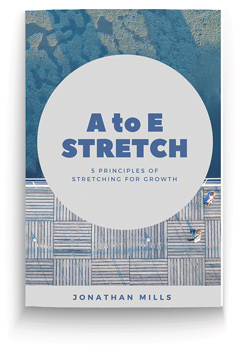“The mirror, a tool by which to ‘know thyself’, invited man to not mistake himself for God, to avoid pride by knowing his limits and to improve himself. His was thus not a passive mirror of imitation, but an active mirror of transformation” (Sabine Melchior-Bonnet)
A mirror (or looking glass) is an object that reflects light in such a way that, for incident light in some range of wavelengths, the reflected light preserves many or most of the detailed physical characteristics of the original light, called specular reflection. This is different from other light-reflecting objects that do not preserve much of the original wave signal other than colour and diffuse reflected light, such as flat-white paint.
The use of mirrors dates back many thousands of years, where pools of dark still water or water collected in a primitive vessel reflected back the image of a person or scene. The earliest manufactured mirrors were those of polished stone such as obsidian, a naturally occurring volcanic glass. Some were found in modern-day Turkey dating to around 6 000 B.C. Then followed polished copper (Mesopotamia – 4 000 B.C.), bronze (China – 2 000 B.C.), alloys and then finally glass, useful for its flatness. The mirror has many applications today – personal grooming, windows, safety (as in convex mirrors fitted to vehicles which have a wider vision and therefore minimise blind spots), technology (televisions, projectors, solar power), military (Archimedes was said to have used a large array of mirrors to ‘blind’ the passengers of enemy boats), seasonal lighting (for towns that only receive minimal sunlight during the winter months, mirrors have been installed to reflect sunlight into the towns), architecture, decorations and many more. Socrates, apparently, with some humour, urged young people to look at themselves in mirrors so that, if they were beautiful, they would become worthy of their beauty and, if they were ugly, they would know how to hide their disgrace through learning. The key to the mirror, however, lies in its application – for the most part, it has a transformative role to play.
In the modern business arena, core values support company vision, shape the culture and reflect what the company values. They are the essence of the company’s identity – the principles or beliefs that guide behaviour. An established set of core values provides both internal and external benefits for the company:
- A paradigm or platform upon which to make decisions (e.g. if quality is a value, then defective products will get eliminated)
- Maintenance of dignity and a culture of respect
- The ability to inform potential clients what you stand for and the tenets upon which the potential relationship will be based
Deviating from the core values by any in a leadership role disappoints and confuses employees and frustrates customers. All in leadership positions should mirror the company values – their behaviour should promote the values and keep all employees in the business accountable to being aligned to them. Mirroring the values is part of a leader’s transformation role – the principles by which the leader engages others and influences them towards productivity, innovation and success. Focusing on the values may include the following activities:
- Referring to the values in all decision-making meetings – values should guide decisions, quality standards and service delivery.
- Building the culture around the values – aligned behaviour shows in the way a leader communicates, listens, values people and their ideas, deals with bad behaviour or performance issues, etc.
- Being present for staff and customers – active participation in the lives of others (no leadership by remote control).
- Demonstrating how the values inform the company’s big picture, vision and goals – drawing the dotted line between the values and ‘why we do what we do’.
- Being ruthlessly consistent – behaviour constancy breeds trust and consistency in the application of values engenders a sense of security.
To prevent values from becoming a sham, with the resulting cynicism poisoning the culture, leaders must become a mirror of the company’s values – actively transforming the behaviour of the company in line with its values. Leaders must be aggressively authentic in living out the organisation’s core values.










